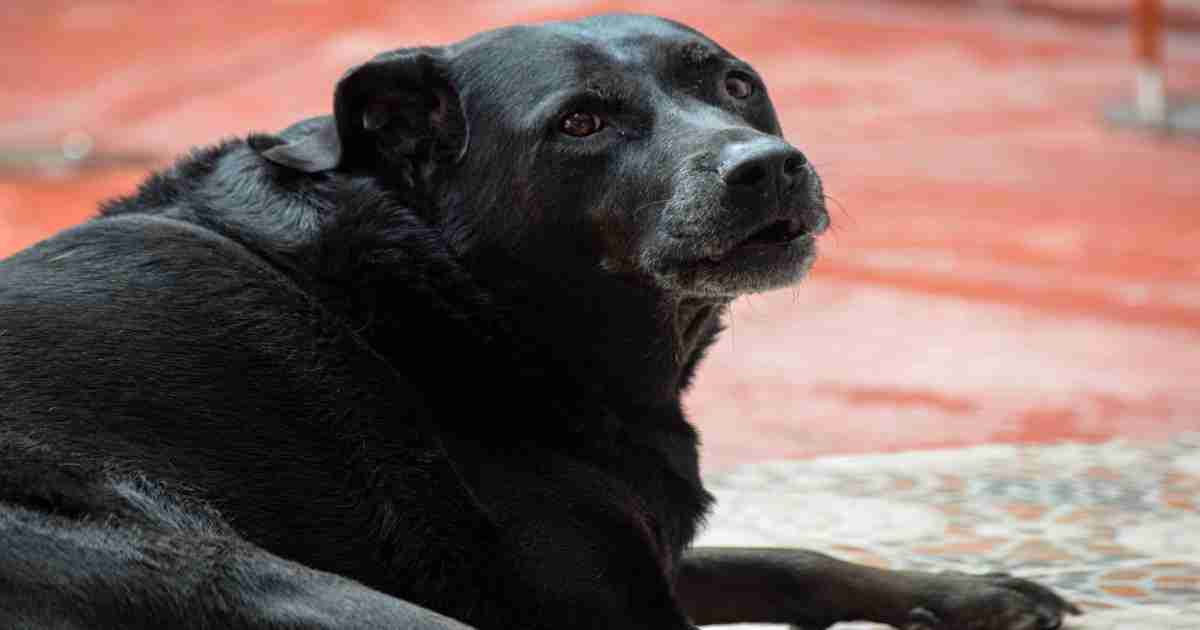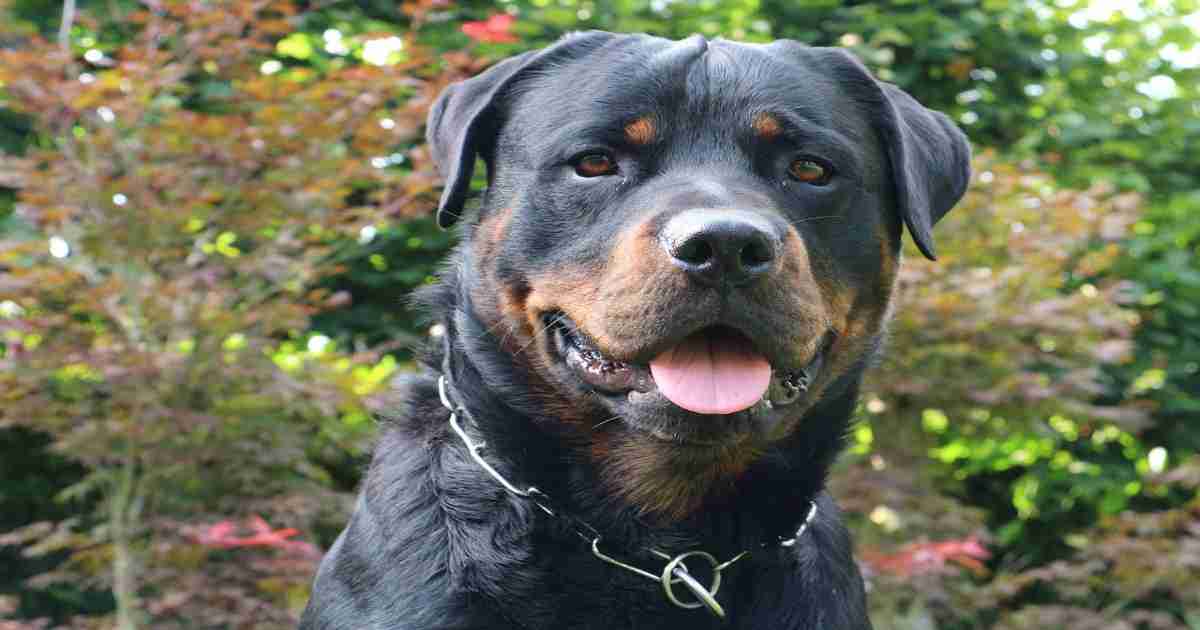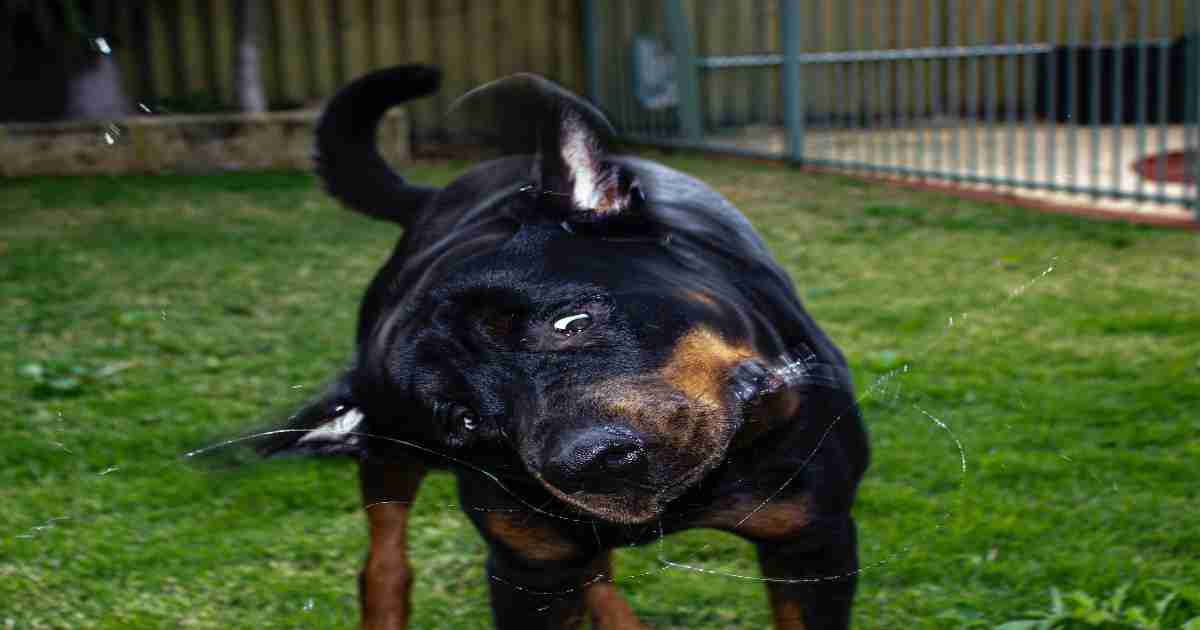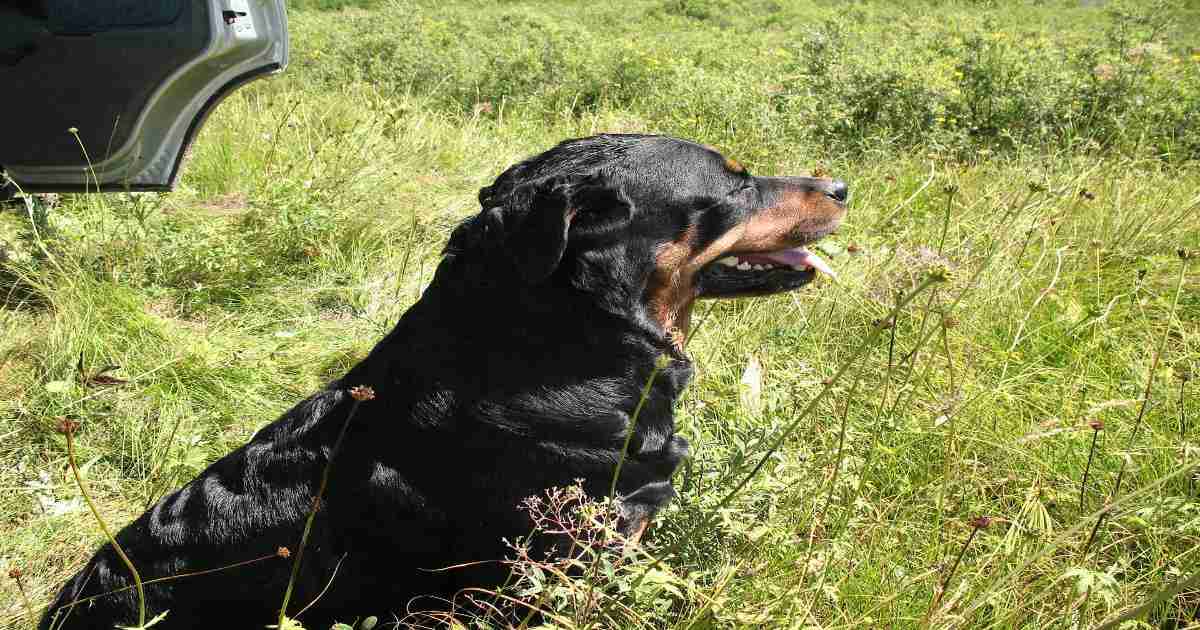Bringing a Rottweiler puppy into your home can be an exciting and rewarding experience.
Rottweilers are known for their loyalty, intelligence, and protective nature, making them excellent family companions. However, as with any dog breed,
Rottweilers communicate through various vocalizations, including growling.
Understanding and interpreting these growls is crucial for new owners to ensure a harmonious relationship with their furry friends.
This guide will delve into the different types of growls a Rottweiler may produce and what they mean.
Understanding Rottweiler Communication
Understanding Rottweiler Communication is crucial for new owners to develop a strong bond with their furry companions.
One of the essential aspects of this communication is interpreting Rottweiler puppy growls. Like all dogs, Rottweilers use growls as a form of vocalization to express various emotions and needs.
By paying close attention to the different types of Rottweiler puppy growls and their contexts, owners can better understand their pet’s feelings and respond appropriately to ensure a harmonious and enjoyable relationship.
The Importance of Paying Attention to Growls
The Importance of Paying Attention to Rottweiler puppy growls cannot be overstated.
Growling is a significant aspect of Rottweiler communication, and it serves as a vital means for them to express their emotions and convey their needs.
As responsible owners, it is crucial to recognize and interpret these vocalizations to understand better what our Rottweiler puppies are trying to communicate.
By paying attention to the different types of Rottweiler puppy growls and the situations in which they occur, we can gain valuable insights into their feelings, whether it’s a playful growl during a fun interaction or a warning growl in response to a perceived threat.
By giving proper attention to their growls, we can build a stronger bond with our Rottweilers and address their needs effectively, fostering a happy and trusting relationship.
Different Types of Rottweiler Puppy Growls
Different Types of Rottweiler growls are essential for new owners to understand to better communicate with their furry companions.
Rottweiler puppy growls can vary in tone and intensity, conveying different emotions and messages.
Playful Rottweiler growls are often high-pitched and accompanied by a wagging tail, indicating excitement and a desire to engage in friendly play.
On the other hand, warning Rottweiler growls are deeper and more guttural, serving as a clear signal of discomfort or perceived threat.
By being attuned to the nuances of these Rottweiler puppy growls, owners can respond appropriately to their pet’s needs, ensuring a positive and trusting relationship with their canine friend.
Playful Growls vs Warning Growls
Playful Rottweiler puppy and warning growls are two distinct vocalizations that new owners should be able to differentiate.
Playful growls from Rottweiler puppies typically accompany a wagging tail, an excited demeanor, and a higher-pitched tone.
These growls allow Rottweilers to express joy and enthusiasm during playtime and friendly interactions.
On the other hand, warning Rottweiler puppy growls are more intense, often accompanied by a rigid body posture and fixed stare.
These growls indicate that the Rottweiler feels uncomfortable, threatened, or trying to establish boundaries.
As responsible owners, it is crucial to recognize the context and the cues associated with these different types of Rottweiler puppy growls to ensure a safe and harmonious relationship with our furry companions.
Recognizing Playful Vocalizations Rottweiler Puppy Growls
Recognizing playful vocalizations in Rottweiler puppy growls is vital for new owners to foster a positive and engaging relationship with their furry companions.
Playful Rottweiler puppy growls are distinct in their expression, characterized by a higher-pitched tone, a wagging tail, and a relaxed body posture.
These vocalizations often invite to play and indicate that the Rottweiler is cheerful and joyful.
During playtime, Rottweilers may emit these growls to communicate their excitement and enthusiasm, encouraging their owners to participate in fun activities.
By understanding and appreciating these playful vocalizations, owners can respond with affection and active involvement, reinforcing the bond with their Rottweiler puppies and creating enjoyable moments of shared play and companionship.
Identifying Warning Signals of Rottweiler Puppy Growls
Identifying warning signals in Rottweiler puppy growls is crucial for new owners to ensure the safety and well-being of their furry companions.
Warning Rottweiler puppy growls are distinct in intensity and tone, typically lower-pitched and more guttural than playful.
These growls are accompanied by a stiff body posture and a fixed stare, signaling that the Rottweiler feels threatened or uncomfortable.
As responsible owners, it is essential to take these warning signals seriously and avoid dismissing them as mere playfulness.
When a Rottweiler emits warning growls, respecting their communication and giving them space is essential.
Pushing the dog to continue an interaction when they are expressing discomfort may escalate the situation, potentially leading to undesirable outcomes.
By recognizing and respecting these warning signals in Rottweiler puppy growls, owners can foster trust and create a safe environment where their pets feel understood and supported.
Assessing the Environment
Assessing the environment when it comes to Rottweiler puppy growls is key to understanding the context and reasons behind their vocalizations.
Rottweilers may use growls as a means of communication in various situations, and as responsible owners, it is essential to pay attention to the environment in which these growls occur.
By doing so, we can identify potential triggers for the growling behavior and address any underlying issues.
For example, Rottweiler puppy growls during playtime might indicate excitement and enjoyment, while growls in unfamiliar or stressful situations might signal fear or anxiety.
By carefully observing the surroundings and noting potential stressors, such as new people or animals, loud noises, or crowded spaces, we can respond appropriately to our Rottweiler’s needs and ensure a supportive and secure environment for them to thrive.
Context Matters: Understanding the Situation
Context significantly matters when it comes to understanding Rottweiler puppy growls.
As responsible owners, it is essential to consider the situation in which these vocalizations occur to interpret their meaning accurately.
Rottweilers may emit growls in various scenarios, such as during playtime, social interactions, or encounters with unfamiliar people or animals.
We can gain valuable insights into Rottweiler’s emotions and intentions by paying attention to the specific context in which the growls occur.
For instance, playful Rottweiler puppy growls during playtime indicate excitement and joy, while warning growls in unfamiliar situations might suggest a sense of discomfort or perceived threat.
Assessing the context surrounding the growling behavior enables us to respond appropriately, ensuring a positive and enriching experience for our Rottweiler and ourselves.
Potential Triggers for Rottweiler Puppy Growls
Understanding the potential triggers for Rottweiler puppy growls is essential for new owners to promote a harmonious relationship with their furry companions.
Rottweilers may growl in response to various stimuli, and identifying these triggers can provide valuable insights into their emotions and needs.
Common potential triggers for growling include territorial instincts when they feel the need to protect their space or family, fear of strangers or unfamiliar environments, feeling threatened or cornered, or even experiencing pain or discomfort.
By being aware of these potential triggers and the associated body language cues, such as raised hackles, bared teeth, or a tense body posture, owners can take appropriate steps to create a safe and supportive environment for their Rottweilers.
Avoiding or mitigating these triggers can help reduce the likelihood of growling behavior and foster a more relaxed and happy disposition in our beloved Rottweiler companions.
Distinguishing Fearful Rottweiler Puppy Growls
Distinguishing fearful growls in Rottweiler puppy growls is crucial for new owners to address their pet’s anxieties and create a sense of security.
When Rottweilers feel afraid or threatened, they may express their discomfort through growling as a form of communication.
Fearful growls are distinct in their tone and intensity, often sounding low-pitched and accompanied by other signs of stress, such as crouching, trembling, or avoiding eye contact.
As responsible owners, it is essential to recognize these cues and respond with empathy and patience.
Comforting and reassuring our Rottweilers during such situations can help build trust and confidence, gradually easing their fears.
Early socialization and positive reinforcement training can also play a significant role in minimizing fearful growls and helping our Rottweilers develop into well-adjusted and confident companions.
Reading Rottweiler Body Language
In addition to growling, your Rottweiler’s body language can also give you valuable information about their emotional state. Trembling, crouching, or trying to hide are signs of fear.
Addressing Fear and Anxiety
To help your Rottweiler overcome fear and anxiety, developing a safe and supportive environment is crucial. Gradual exposure to triggers and positive reinforcement can build their confidence.
Decoding Aggressive Rottweiler puppy Growls
Decoding aggressive growls in Rottweiler puppy growls is essential for new owners to address potential behavioral issues and ensure a safe environment for everyone involved.
Aggressive growls are distinct in their deep and continuous tone, often accompanied by baring of teeth and a rigid body posture.
When a Rottweiler exhibits aggressive growling behavior, it is crucial not to dismiss or ignore it, as it may be a sign of real distress or perceived threat.
As responsible owners, we must take immediate action and seek professional help from a qualified dog trainer or behaviorist to address the root cause of the aggression.
Positive reinforcement training methods and establishing ourselves as firm but loving leaders can be crucial in managing aggressive tendencies and fostering a trusting and respectful relationship with our Rottweilers.
By addressing aggressive growls early on and providing the necessary guidance and training, we can help our Rottweilers become well-mannered and well-adjusted companions in various social situations.
Signs of Aggression in Rottweilers
Aggressive growls are deep, continuous, and often accompanied by baring of teeth and rigid body language. These signals indicate that your Rottweiler perceives a real threat and may attack if provoked.
Dealing with Aggressive Behavior
Aggression in Rottweilers should never be ignored or encouraged. In such cases, seeking professional help from a qualified dog trainer or behaviorist is crucial to address the issue effectively and safely.
Socializing Your Rottweiler
Socializing your Rottweiler is essential for their well-rounded development and helps prevent potential behavioral issues like fear-based Rottweiler puppy growls.
Early socialization exposes them to various people, animals, and environments, teaching them how to interact positively.
Properly supervised introductions to new experiences build their confidence, making them more comfortable and less likely to exhibit fearful growling in unfamiliar situations.
The Role of Early Socialization
Introducing your puppy to various people, animals, and environments at a young age can help them develop into well-adjusted and confident adults.
Introducing New People and Animals
Properly supervised introductions to new people and animals are essential to prevent fear-based aggression and promote positive interactions.
Establishing Trust and Leadership
Building a strong bond with your Rottweiler is essential for effective training and communication.
Building a Strong Bond with Your Rottweiler
Spend quality time with your puppy, engage in positive activities, and establish yourself as a trustworthy and caring leader.
Effective Training Methods
Positive reinforcement training techniques, such as reward-based training, are highly effective in teaching your Rottweiler desired behaviors.
Seeking Professional Help
Professional assistance may sometimes be necessary to address specific behavioral issues or challenges.
When to Consult a Professional Trainer or Behaviorist
If you notice persistent or concerning behavioral issues in your Rottweiler, you must seek help from a qualified dog trainer or behaviorist.
Addressing Persistent Behavioral Issues
Professional trainers can assess your Rottweiler’s behavior, identify underlying causes, and develop a customized training plan to address specific issues effectively.
Creating a Safe Environment
Providing a secure and comfortable environment is crucial for your Rottweiler’s well-being.
Setting Up a Safe Space for Your Rottweiler
Designate a quiet and cozy area where your puppy can retreat when they need alone or feel overwhelmed.
Avoiding Potential Triggers
Identify potential triggers that cause stress or anxiety for your Rottweiler and try to minimize their exposure to such situations.
Exercise and Mental Stimulation
Everyday exercising and intellectual stimulation are crucial for a happy and well-balanced Rottweiler.
The Importance of Regular Exercise
Engage your Rottweiler in daily physical activities like walks, playtime, or fetch to help release pent-up energy.
Keeping Your Rottweiler’s Mind Engaged
Through puzzle toys, training sessions, and interactive games, intellectual stimulation can save you boredom and maintain your puppy mentally sharp.
Positive Reinforcement and Rewards
Fine reinforcement is a powerful tool in schooling your Rottweiler.
Encouraging Good Behavior
Reward your Rottweiler with treats, praise, or affection when they exhibit positive behaviors, reinforcing those actions.
Using Treats and Affection Effectively
Use treats and affection as rewards judiciously, ensuring they are linked to desired behaviors to avoid inadvertently encouraging unwanted actions.
Consistency and Patience
Consistency and patience are key to a hit training and building a strong bond.
The Role of Consistency in Training
Consistently enforce rules and boundaries, ensuring everyone in the household is on the same page regarding your Rottweiler’s training.
Being Patient with Your Rottweiler’s Progress
Every dog learns at their own pace, so be patient and understanding throughout training.
The Role of Body Language
Understanding and using appropriate body language is essential when interacting with your Rottweiler.
How Your Body Language Affects Your Rottweiler
Dogs are highly perceptive of human body language, so ensure your gestures and postures convey calmness and assertiveness.
Reading Your Rottweiler’s Cues
Pay attention to your Rottweiler’s body language and respond accordingly to avoid miscommunication or discomfort.
Conclusion
Interpreting Rottweiler puppy growls is an essential skill for new owners. By understanding the different types of growls and their contexts, you can better address your puppy’s needs and emotions.
Remember to prioritize positive reinforcement and professional assistance when needed, and create a safe and stimulating environment to ensure a happy and well-behaved Rottweiler.
FAQs
- Why does my Rottweiler growl during play?
- Rottweilers often growl during play as a sign of excitement and enthusiasm. It’s a natural behavior and not a cause for concern.
- How do I know if my Rottweiler is growling out of fear?
- Fearful growls are usually accompanied by signs of stress, such as crouching, trembling, or avoiding eye contact.
- Can I train my Rottweiler not to growl?
- While you can’t eliminate growling, you can train your Rottweiler to use other communication means and be more comfortable in certain situations.
- Is socialization essential for my Rottweiler?
- Yes, early socialization is crucial for a well-adjusted and confident Rottweiler. Exposing them to different experiences helps them develop into friendly and outgoing dogs.
- When should I seek professional help for my Rottweiler behavior?
- If your Rottweiler displays persistent or concerning behavioral issues, such as aggression or anxiety, It is exceptional to consult a expert canine trainer or behaviorist.










3 thoughts on “How to Interpret Rottweiler Puppy Growls: A Guide for New Owners”